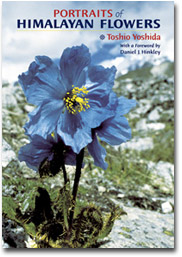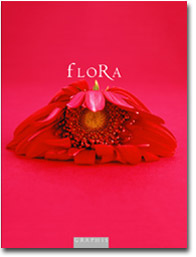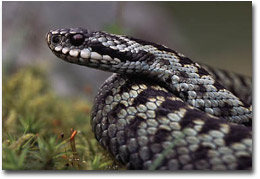|
|

Product Showcase
Compiled by Tere Hendricks and Peter Madeley
"During this period, roads running along the steep slopes of the mountainside are frequently washed out from place to place. Even small streams, which are easy to straddle in the dry season, turn into hazardous torrents of mud and rock… There are also dreadful leeches, elastic as rubber bands which swarm out to take hold of any warm-blooded creature they can find." Filled with 108 color photographs--one for each bead in the Tibetan Buddhist rosary-- Portraits of Himalayan Flowers is a delight to look at and to read. The flowers are the main focus of every photograph. Toshio Yoshido got down, got dirty, and got up close to take these pictures. "To see these flowers on a large scale, I had to become like a pollinator." But even with that perspective, the harsh beauty of the landscape that is home to these plants shines through. Add snow covered Himalayan peaks to the background and we are witnesses to rare beauty. Some of the flowers will look familiar, like the lilies, orchids, primrose, and rhododendron. Some, like the Saussurea and Saxifraga species are decidedly other-worldly. Flower lovers and botanists alike will find the field notes accompanying the photos highly informative. Photographers and adventurers will also delight in them. "While waiting for these flowers to stop swaying in the wind, I was aware of bits of soil and rock that were crumbling beneath my feet and falling down the steep slope to the glacier below." If that doesn't sound just a bit scary, consider this--all of the flowers shown in this book were found at altitudes ranging from 2,600 to 5,250 meters or 8,580 to 17,325 feet. Originally published in Japanese in 1994, this English language edition of Portraits of Himalayan Flowers was published by Timber Press, Inc. in September of 2002. The book is available from Timber Press (www.timberpress.com) or through your favorite bookseller. This book definitely belongs on every flora photographer's holiday list! 124 pp, 108 color photos, 1 map, 7 7/8 x 11 5/8", hardcover, $39.95. Available at Amazon.com. Tere - NPN 096
I doubt if you will find a more impressive collection of floral images in any other book. What you will not find in this book are many photographs taken in natural settings; almost all of the images in Flora were made in studios. Studio photography may be heresy to some nature photographers, but to anyone striving to be a master of flower photography, these images will be inspiring. The first in a promised series of books, Flora features the work of 59 new and established photographers from across the globe. It has over 200 color and black and white images, some simple, some elaborate, and all beautiful. Take a look at Flora. Find out just how good great photography can be. Flora: A Contemporary Collection of Floral Photography, Graphis, Inc., 160 pages, hardcover, 7x10 inches, $40.00. Available at Amazon.com. Tere - NPN 096 Canon 500D diopter The Canon 500D is a +2 diopter available in 72 and 77mm filter threads which screws on as a normal filter. (Nikon make T-series diopters as well, but the maximum filter size is 62mm).
This useful accessory works by reducing the minimum focus distance of any lens to approximately 50cm. The more expensive D suffixes denotes a double element construction which gives improved image quality. Typical magnification benefits are considerable when used with telephoto lenses in particular. I regularly use the 500D on my 100-400mm IS lens and find that the focus range is limited and magnification is best changed by altering the focal length.
Value for money? £180 for what is basically a filter seems like a lot of money. Cheaper dedicated macro lenses are available for less than this, but there is the advantage of the diopter being used on a range of lenses using step up/down adapters if required, and it takes very little space and weight in the kit bag. The only drawback I have found is the limited focus range which leaves the 80-140cm, impossible to achieve with either the 500D or extension tubes. “For field nature photography the convenience of mating a zoom with a 2 element diopter is incredible…. Tuck one into your pack as you have a complete close up system.” John Shaw I wouldn’t be without mine whenever I go out! Peter - NPN 438 Comments on NPN camera equipment reviews? Send them to the editor. |
||||||||||||||||||||||||||||||
|
|


